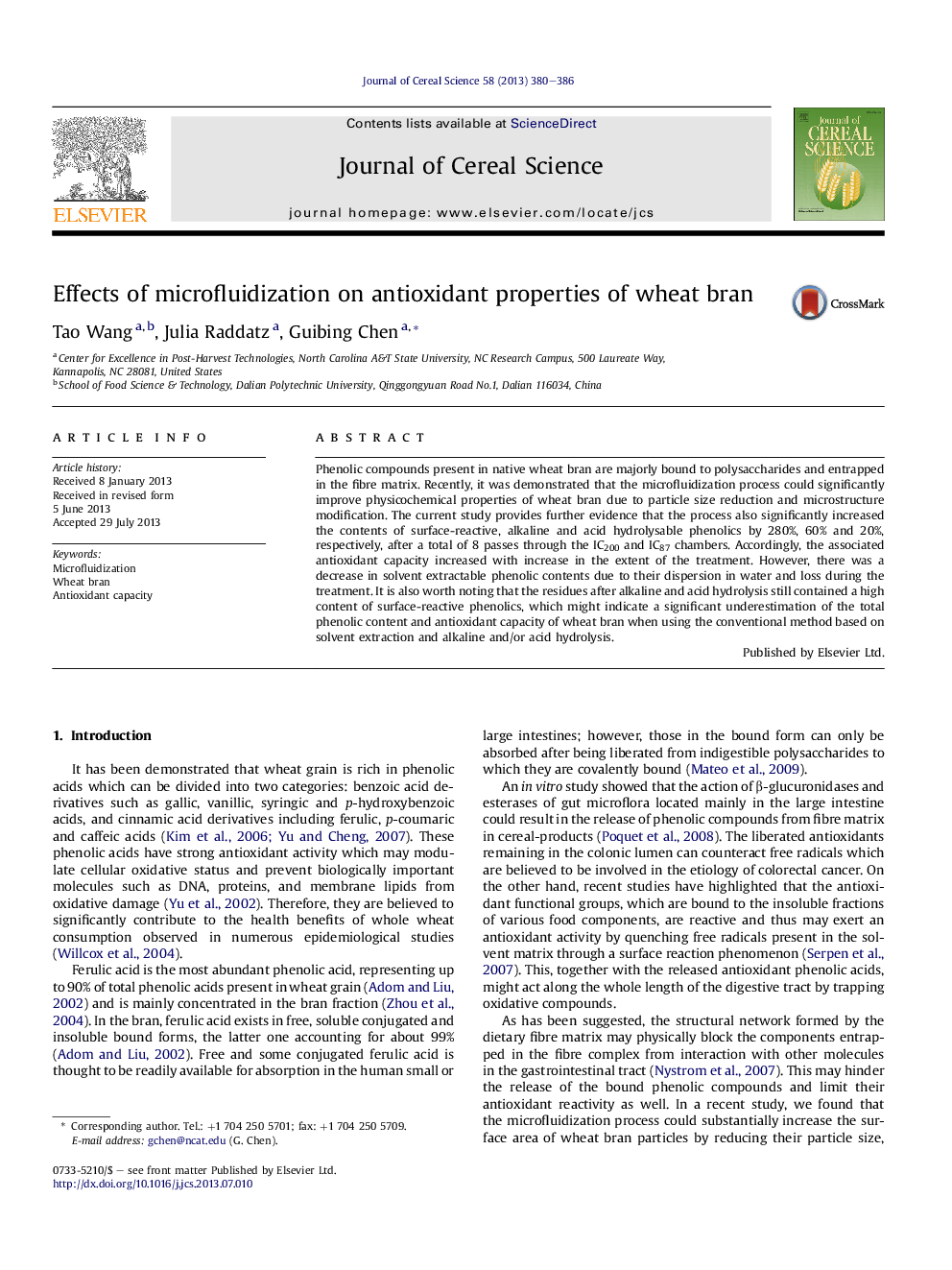| Article ID | Journal | Published Year | Pages | File Type |
|---|---|---|---|---|
| 4515987 | Journal of Cereal Science | 2013 | 7 Pages |
•The microfluidization process was used to treat wheat bran.•The process increased contents of surface-reactive and hydrolysable phenolics.•Alkaline- and acid-hydrolyzed wheat bran still contained high levels of phenolics.
Phenolic compounds present in native wheat bran are majorly bound to polysaccharides and entrapped in the fibre matrix. Recently, it was demonstrated that the microfluidization process could significantly improve physicochemical properties of wheat bran due to particle size reduction and microstructure modification. The current study provides further evidence that the process also significantly increased the contents of surface-reactive, alkaline and acid hydrolysable phenolics by 280%, 60% and 20%, respectively, after a total of 8 passes through the IC200 and IC87 chambers. Accordingly, the associated antioxidant capacity increased with increase in the extent of the treatment. However, there was a decrease in solvent extractable phenolic contents due to their dispersion in water and loss during the treatment. It is also worth noting that the residues after alkaline and acid hydrolysis still contained a high content of surface-reactive phenolics, which might indicate a significant underestimation of the total phenolic content and antioxidant capacity of wheat bran when using the conventional method based on solvent extraction and alkaline and/or acid hydrolysis.
